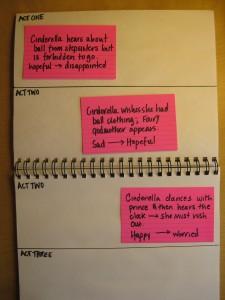Wednesday Writing Prompt: Planning the Plot by Rochelle Melander
 Are you a plotter or pantser? Plotters plan out the scenes in their novels, pantsers fly by the seat of their pants. The saying comes from aviation. One can fly a plane two ways: using one’s instruments or using one’s instincts. Every year during NaNoWriMo, participants claim one or the other. I encourage you to claim both.
Are you a plotter or pantser? Plotters plan out the scenes in their novels, pantsers fly by the seat of their pants. The saying comes from aviation. One can fly a plane two ways: using one’s instruments or using one’s instincts. Every year during NaNoWriMo, participants claim one or the other. I encourage you to claim both.
Plot as much as you can before the month starts: that’s just going to make the month go easier. You will have a general idea of what might happen in your story. Then, get used to listening to your gut. Let your characters fly off course, do loops, and make unplanned landings and layovers.
Unsure how to plot? This year I’ve been inspired by the screenwriting book Save the Cat: The Last Book on Screenwriting You’ll Ever Need by Blake Snyder. Here are three of his tools that will help you rock NaNoWriMo:
Start with a logline. In screenwriting, a logline is a single sentence that describes a movie. In Save the Cat by Blake Snyder, a logline needs four elements: irony, a compelling mental picture, audience, and a killer title. (pp. 16-17). Why do you need a logline? It gives you the shortest possible game plan going into the month. The logline will help you discern the core of your story, the genre you are writing in, and the people you are writing for. When you are tempted to go off course in the middle of the month, the logline will help you stay focused.
Get structure. When I write nonfiction books, a good structure helps me to write the book more easily. I’d argue that structure can also help a writer create a brilliant novel. Blake Snyder says this about structure in movie writing, “After coming up with the idea, and identifying the “who: in your movie—and who it’s for—the structure is the single most important element in writing and selling a screenplay.” (p. 68) In Save the Cat, Blake Snyder presents a brilliant beat sheet that helps writers jot down each of their plot points on a single page. You can download your own copy from his website: http://www.blakesnyder.com/tools/ Before November starts, use the sheet to plan your book’s structure.
Develop scenes. Once you know the big plot points, you’ll need to figure out how your characters get from the beginning to the end of the novel in 50,000 words. Blake Snyder encourages readers to create an index card for each scene that contains three elements:
*what happens
*the emotional change in the scene
*the conflict in the scene
He recommends that writers create 40 scenes (no more or less) and lay out the cards on a plot chart something like this:
Your turn: Are you a plotter or a pantser or both? What tools do you use to create your plot?










I was a frustrated pantser all the way…until I read Blake Snyder! I think the whole screenplay thing just simplified everything for me. And then I found your Write-A-Thon book. I’m finally, finally thinking I may just be able to get 50k written for Nano.
I felt the same way about Snyder’s book! It helped me understand plot in a whole new way. Thanks for picking up Write-A-Thon–I appreciate it! And happy NaNo!